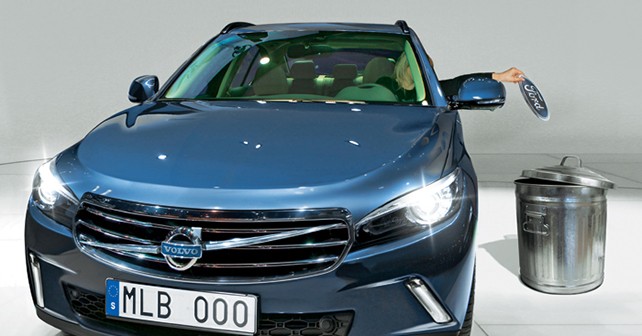
Let’s be honest, no one would have bet much on it. When a Chinese automaker took over Volvo from Ford’s family jewels auction in 2010, many saw it as a short-sighted operation – the product of an unrealistic vision from an industry far too young and inexperienced to manage a brand with Volvo’s tradition. And yet, in Gothenburg, following the introduction of two models, there are now plans to re-design the first SUV that Volvo ever produced.
During their first two years at the helm, the Chinese carmaker hasn’t missed a shot – despite having allowed the Swedish management team room to manoeuvre freely, and never showing up at official events (to leave the brand’s Swedish image uncontaminated). It has finished the V60 Sportswagon hybrid and launched the unprecedented V40. In short, it’s spruced up the whole line. But, above all, it’s continued to finance ground-breaking research on safety – starting from the automatic high-beam headlights and ending with the cyclist-detection device. Now it’s ready for the next step, to shed the last hereditary traces of Ford’s legacy and spread its own technical wings. This will be the turning point, the chance to reveal the Chinese-managed company’s maturity level.
The car that will help the Chinese carmaker make this final turn will be the next generation XC90 – the model that ten years ago marked the inauguration of the Swedish carmaker in the SUV sector. For the upcoming anniversary, the model will brandish a brand new platform, developed in-house, for every member of its high-end vehicle line up (in addition to the XC90, that also includes the V70 station wagon and the S80 sedan, which will be called the V90 and the S90).
It’s worth remembering, though, that the Swedish automaker is under a heavy debt with Ford – from which it inherited the platforms that were developed jointly during the ‘governorship’ of the American automaker at a time when Volvo shared the Premier Automotive Group’s luxury division with Aston Martin, Jaguar, and Land Rover. Even the V40, the line’s most recent model, is born on a platform that is shared with the Focus. Now, because the license contracts for the implementation of these technologies are expiring, it was necessary to plan the automaker’s future at home.
The new XC90 will grow not only in build, but also in image and prestige. It will need to speak predominantly to the American market (still in first place), but also to the Chinese, Russian, and, possibly even, Indian markets where the new rich are growing in numbers. According to rumours, however, it will be the interiors that will make the biggest jump in terms of quality – both in fit-and-finish and material quality, but also in regards to the man-machine interface.
The Engines are Shrinking
An area in which the XC90 will not grow, however, is under the hood. Here Volvo will progressively shed the 5 and 6 cylinder engines in favour of new 4 cylinder power-plants. These, however, will be more modern and efficient – in both petrol and diesel. They will also be supercharged, and, for the larger vehicles, tailored for pairing with electric propulsion. The different levels of power will vary from 140 to 280bhp in the petrol versions, and to 230bhp for the diesel, and, according to the head of research and development, Peter Mertens, they would be “between 15 and 30% more efficient than the current engines.” Also under study is a three-cylinder petrol, which, however, doesn’t pertain to the XC90. In fact, the new engines are expected to be out before the new car is. While the XC90 doesn’t hit the market until the end of 2014, the new engines are likely to be released this year – in the V60 Sportswagon most likely. It turns out that the 60 class – sedans, estates and mid-sized SUV’s – will adopt the same platform, and it’s no coincidence that its acronym SPA (Scalable Platform Architecture) explicitly refers to the dimensional modularity.
The model that will replace the V40 in seven years time, however, is a completely different matter. This is because it’s projected to be too small for the SPA platform. For the future model, it’ll be necessary to develop a tailor-made platform for which the Swedish maker has already declared a willingness to share its components and systems with other partners. In the meantime, it’s making the most out of its economies of scale. For instance, the compact platform, which will be born in Gothenburg in a newly-opened Geely R&D Centre, will equip both Geely and Volvo models for the Chinese and world markets.
© Riproduzione riservata


















Write your Comment